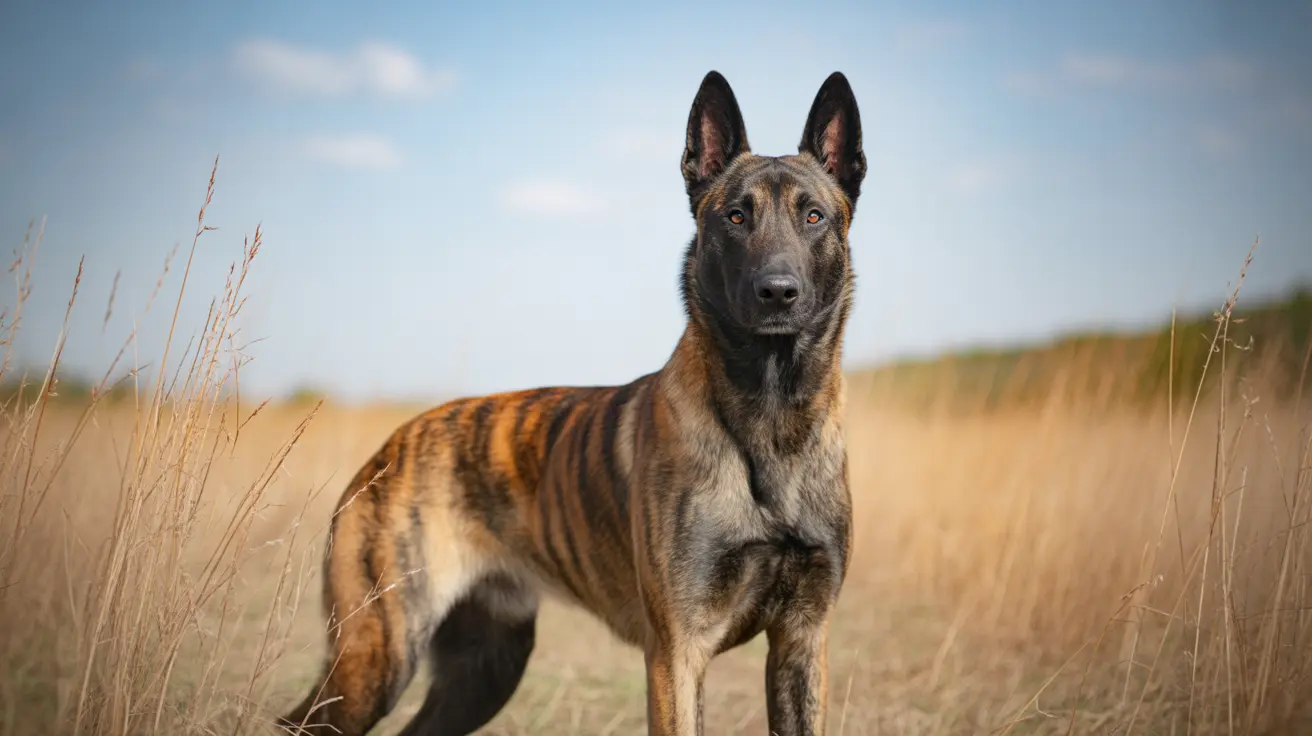The Belgian Malinois, renowned for its intelligence and working capabilities, comes in an intriguing array of coat colors beyond the standard fawn and mahogany. For breed enthusiasts and potential owners, understanding these rare color variations offers fascinating insights into canine genetics and helps make informed decisions about acquiring these exceptional dogs.
In this comprehensive guide, we'll explore the full spectrum of rare Belgian Malinois colors, their genetic origins, and what potential owners should know about these unique variations.
Standard vs. Rare Belgian Malinois Colors
While the American Kennel Club (AKC) officially recognizes only fawn and mahogany colors with black masks, several striking rare variations exist naturally within the breed. These non-standard colors, though beautiful, are typically not eligible for conformation shows but remain popular among enthusiasts.
Most Notable Rare Color Variations
The Elusive Black Belgian Malinois
All-black Belgian Malinois represent one of the most sought-after rare colors. These dogs possess a completely black coat, including their nose, lips, and paw pads. The genetic combination requiring both parents to carry specific genes makes this variation particularly uncommon and valuable.
Brindle Pattern: The Rarest of All
The brindle Belgian Malinois exhibits distinctive dark stripes over a fawn or red base coat, creating a tiger-like appearance. This pattern is considered the rarest in the breed, commanding premium prices due to its scarcity.
Gray and Blue Variations
These unique colors result from genetic dilution of the black pigment, creating a striking bluish-gray appearance. Often accompanied by matching gray or blue eyes, these dogs present a distinctive look that sets them apart from standard colorations.
Genetic Factors and Inheritance
Rare coat colors in Belgian Malinois typically result from recessive genes inherited from both parents. Understanding these genetic factors is crucial for both breeders and potential owners:
- Black coloration requires specific gene combinations
- Brindle patterns depend on particular genetic markers
- Dilution genes create gray/blue variations
- Liver/chocolate colors stem from specific recessive alleles
Health and Temperament Considerations
It's important to note that coat color has no scientifically proven impact on a Belgian Malinois's temperament, intelligence, or working ability. However, responsible breeding practices should always prioritize health and temperament over rare color production.
Making an Informed Choice
When considering a rare-colored Belgian Malinois, potential owners should:
- Work with reputable breeders who conduct health testing
- Understand that rare colors often come with higher price tags
- Focus on temperament and health over color preferences
- Request genetic testing documentation when applicable
Frequently Asked Questions
What are the rarest coat colors found in Belgian Malinois besides the standard fawn and mahogany?
The rarest Belgian Malinois colors include brindle (considered the rarest), solid black, gray/blue, and liver/chocolate. These variations occur naturally but are much less common than the standard fawn and mahogany.
How do genetics determine rare Belgian Malinois colors like black, brindle, and liver?
Rare colors result from specific genetic combinations. For example, black requires both parents to carry the necessary genes, while brindle needs specific inherited markers. Liver coloration occurs when puppies inherit two recessive alleles from their parents.
Are rare-colored Belgian Malinois more expensive to buy, and why?
Yes, rare-colored Belgian Malinois typically cost significantly more than standard-colored dogs, often double or triple the price. This premium reflects their scarcity and the specialized breeding required to produce these colors.
Do rare Belgian Malinois coat colors affect their health or temperament?
There is no scientific evidence suggesting that rare coat colors affect a Belgian Malinois's temperament or intelligence. However, responsible breeding practices should always prioritize health and temperament over color.
How can I verify if a Belgian Malinois puppy's coat color is truly rare and genetically authentic?
Work with reputable breeders who provide genetic testing documentation and health certifications. Request to see both parents and their pedigrees, and consider having independent genetic testing performed to confirm color authenticity.






